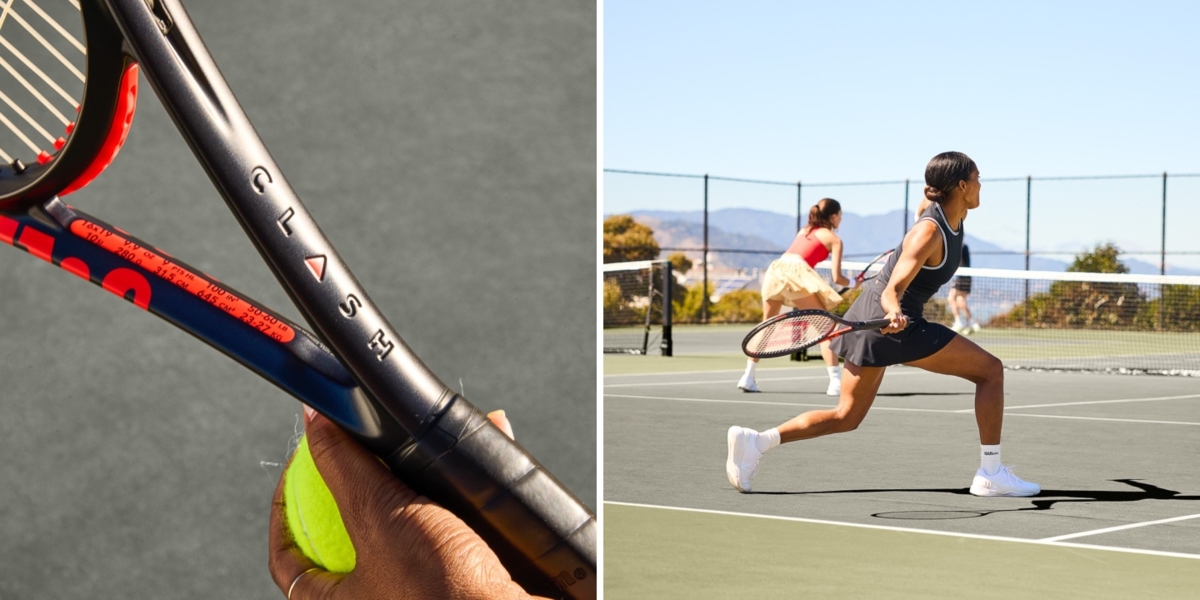How good is the Clash V3.0 really?
If you regularly watch tennis tournaments, you’ll notice that Wilson’s best-selling racket on the tour isn’t visible. None of the well-known pros play with the Clash. So is the Clash not as good as everyone says? — Actually, it is!
For the first time since releasing a racket, Wilson is not relying on top ATP and WTA players for marketing. This won’t be a boring marketing analysis of Wilson, but I think a quick look at their strategy reveals how the Clash managed to reach the top so quickly. Although we play the same sport as Alcaraz and others by definition, in reality, it has little to do with the pros. What we play recreationally, often after a few drinks, may be called tennis and looks like tennis — but do we really need the same equipment as the true tennis pros? Probably not. And that’s exactly why the Clash is so popular among hobby players. Made for us; me and you! With a thicker frame, forgiving string pattern, and a larger sweet spot, the Clash is very easy to play, generates lots of power, and supports both beginners and intermediate players for a long time.
What’s the difference between the V3.0 and version 2?
With the new Clash V3.0, Wilson further refines its successful series—without losing the unique character of the racket. The focus is on more stability, better control, and an even more developed feel. Technically, Wilson again uses the proven FORTYFIVE° technology, but adds a new frame structure: The V3 is equipped with so-called “StableFeel” zones—especially at the 3 and 9 o’clock positions—that provide noticeably more stability on off-center hits. This especially helps players who sometimes wished for clearer feedback with the V2.
A frequently criticized point in the V2 was the somewhat “mushy” feeling on fast balls or shots outside the sweet spot. This is exactly where the V3 improves: The frame remains very soft (RA rating around 54) but, due to a changed carbon distribution, feels much more controlled and defined on impact.
There’s also a small but effective update in the string pattern: The Pro models (100 Pro, 98) retain the 16x20 pattern that was established in the V2 and significantly improves control. The standard models continue with 16x19—but now with optimized tapering (frame thinning), which gives the ball more spin potential and feel.
The design was modernized: Instead of the glossy finish from the V2, the V3 comes in a matte black-red with clean lines—more discreet, sporty, and high-quality. Also new: An improved grommet system that is more durable and easier to replace.
In short:
The Clash V3.0 is the matured version of the V2—soft comfort meets noticeably more control and stability. Those who love the flexible, arm-friendly feel but sometimes want more precision will be very happy with the V3. Players who previously complained about a lack of feedback or not enough power will benefit from this fine tuning.
Conclusion: I’m a big fan of the Clash V3.0 and am confident it will be seen more on the courts in the future. Many hobby players will gain an extra point on a bad day thanks to it, but on the pro tour, it will likely remain rare—and if seen, it’s probably just a Blade disguised as a Clash.
How do you like the Clash? If you’re still unsure whether the Clash is right for you, feel free to test it with us and leave your feedback here.
Joel Bopp, Managing Director Tennis Factory


